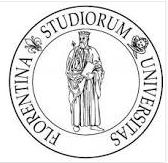预约演示
更新于:2025-05-07
CA1 x Cholinesterase
更新于:2025-05-07
基本信息
关联
6
项与 CA1 x Cholinesterase 相关的药物作用机制 AChE抑制剂 [+4] |
原研机构- |
非在研适应症- |
最高研发阶段临床前 |
首次获批国家/地区- |
首次获批日期1800-01-20 |
作用机制 AChE抑制剂 [+4] |
原研机构- |
非在研适应症- |
最高研发阶段临床前 |
首次获批国家/地区- |
首次获批日期1800-01-20 |
作用机制 CA1激活剂 [+1] |
在研适应症 |
非在研适应症- |
最高研发阶段临床前 |
首次获批国家/地区- |
首次获批日期1800-01-20 |
100 项与 CA1 x Cholinesterase 相关的临床结果
登录后查看更多信息
100 项与 CA1 x Cholinesterase 相关的转化医学
登录后查看更多信息
0 项与 CA1 x Cholinesterase 相关的专利(医药)
登录后查看更多信息
14
项与 CA1 x Cholinesterase 相关的文献(医药)2025-01-22·Journal of Biomolecular Structure and Dynamics
Novel triazole bridged quinoline-anthracene derivatives: synthesis, characterization, molecular docking, evaluation of electronic and enzyme inhibitory properties
Article
作者: Sadeghian, Nastaran ; Sadeghi, Morteza ; Gümüş, Ayşegül ; Gümüş, Selçuk ; Taslimi, Parham
2024-12-01·Toxicon
Bee venom and melittin: Potent key enzyme inhibitors with promising therapeutic potential
Article
作者: Alparslan, Bayram ; Erkan, Cengiz ; Şentürk, Murat
2024-09-01·Journal of Biochemical and Molecular Toxicology
The synthesis of novel unnatural amino acid by intramolecular aza‐Michael addition reaction as multitarget enzyme inhibitors
Article
作者: Gülçin, İlhami ; Atmaca, Ufuk ; Tüzün, Burak ; Abul, Nurgül
分析
对领域进行一次全面的分析。
登录
或

生物医药百科问答
全新生物医药AI Agent 覆盖科研全链路,让突破性发现快人一步
立即开始免费试用!
智慧芽新药情报库是智慧芽专为生命科学人士构建的基于AI的创新药情报平台,助您全方位提升您的研发与决策效率。
立即开始数据试用!
智慧芽新药库数据也通过智慧芽数据服务平台,以API或者数据包形式对外开放,助您更加充分利用智慧芽新药情报信息。
生物序列数据库
生物药研发创新
免费使用
化学结构数据库
小分子化药研发创新
免费使用
